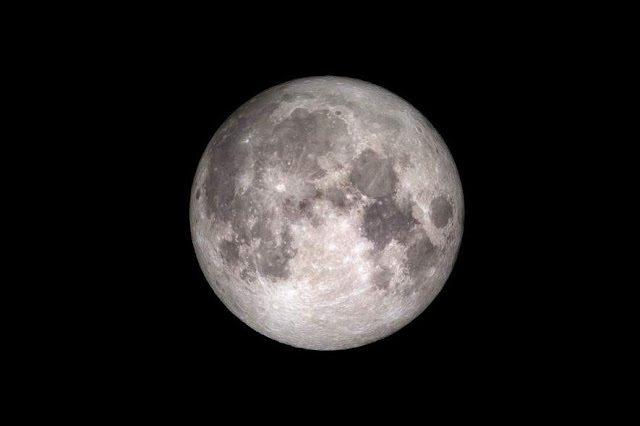Water Ice found on the Moon
It's official, for the first time it has been possible to confirm the presence of water ice on the Surface of the Moon, a discovery that could have major implications for the future lunar exploration and for humanity, this will make it easier to return to our natural satellite, because the presence of accessible water on the surface of the moon could prove useful if we ever establish a permanent base there. The water could be broken down and eventually used for rocket fuel or for oxygen to breathe, according to scientists, who note that the discovery is significant.
The researchers have seen evidence that there are deposits of icy water on the surface of the moon, which may have been laying there for the past 3 billion years. This ice is nestled in the darkest and coldest parts of its polar regions, within craters at both poles of the moon that are permanently in shadow and bitterly cold at −163 °C. These ice deposits are patchily distributed and could possibly be ancient. At the southern pole, most of the ice is concentrated at lunar craters, while the northern pole’s ice is more widely, but sparsely spread.
 |
Scientists
used to think the moon was completely devoid of water. Credit: NASA
|
The team of scientists, was led by Shuai Li of the University of Hawaii and Brown University and including Richard Elphic from NASA’s Ames Research Center in California’s Silicon Valley, used data from NASA’s Moon Mineralogy Mapper (M3) instrument to identify three specific signatures that definitively prove there is water ice at the surface of the Moon.
M3, aboard the Chandrayaan-1 spacecraft, launched in 2008 by the Indian Space Research Organization, was uniquely equipped to confirm the presence of solid ice on the Moon. It collected data that not only picked up the reflective properties we’d expect from ice, but was able to directly measure the distinctive way its molecules absorb infrared light, so it can differentiate between liquid water or vapor and solid ice.
Most of the newfound water ice lies in the shadows of craters near the poles, where the warmest temperatures never reach above -250 degrees Fahrenheit. Because of the very small tilt of the Moon’s rotation axis, sunlight never reaches these regions.
 |
Distribution of water-ice-bearing pixels (green and cyan dots) overlain
on the Diviner annual maximum temperature for the (A) northern- and (B) southern polar
regions. Ice detection results are further filtered by maximum temperature
(<110 K), LOLA albedo (>0.35) (12), and LAMP off and on band ratio (>1.2, only applicable
in the south) (13). Each dot represents an M (3) pixel, ∼280 m × 280 m. Credit: pnas.org
|
Previous observations indirectly found possible signs of surface ice at the lunar south pole, but these could have been explained by other phenomena, such as unusually reflective lunar soil.
With enough ice sitting at the surface – within the top few millimeters – water would possibly be accessible as a resource for future expeditions to explore and even stay on the Moon, and potentially easier to access than the water detected beneath the Moon’s surface.
Learning more about this ice, how it got there, and how it interacts with the larger lunar environment will be a key mission focus for NASA and commercial partners, as we endeavor to return to and explore our closest neighbor, the Moon.
The findings were published in the Proceedings of the National Academy of Sciences on August 20, 2018.
Sources: NASA, Fox News, Space.com, Wikipedia,










